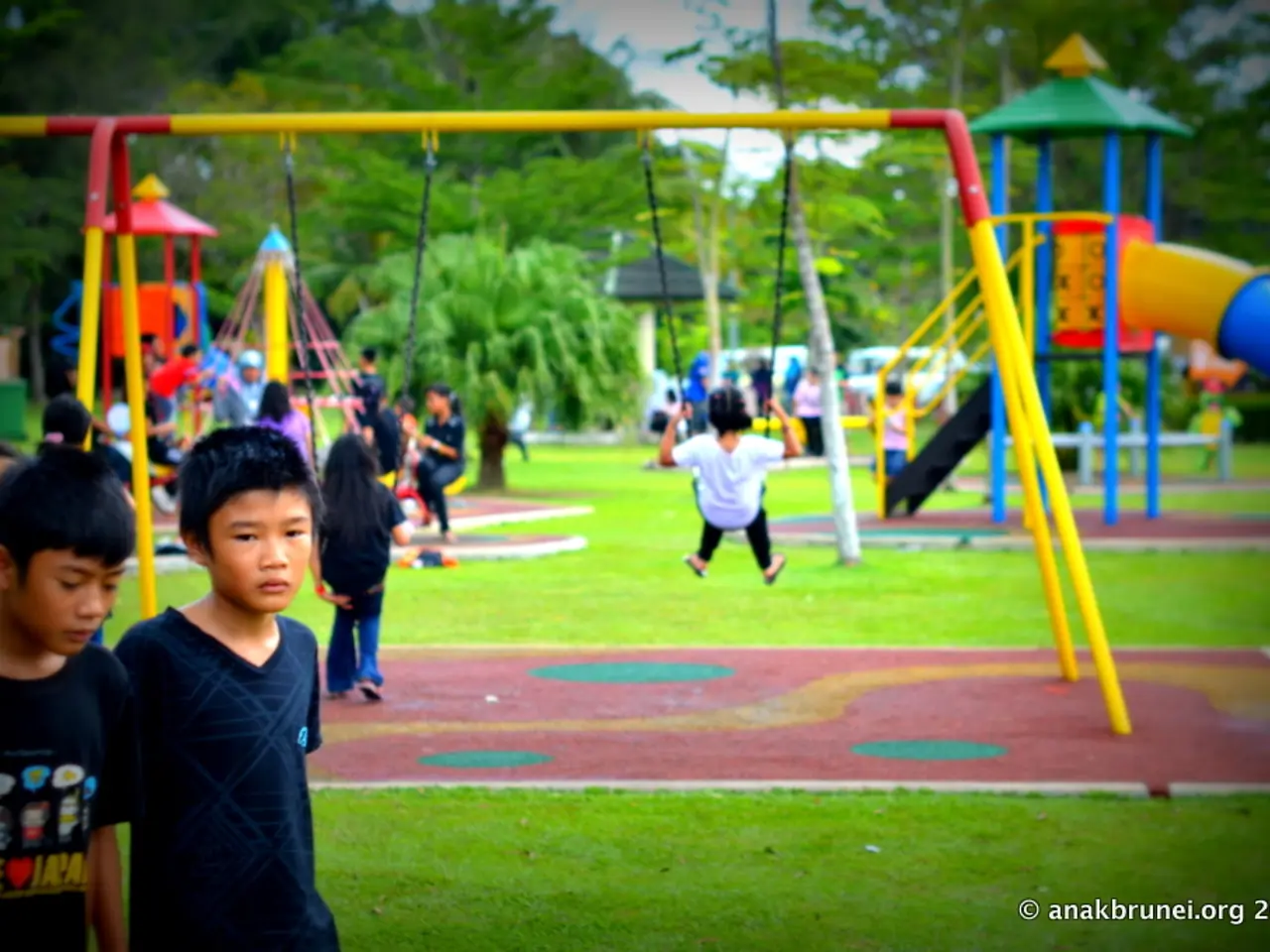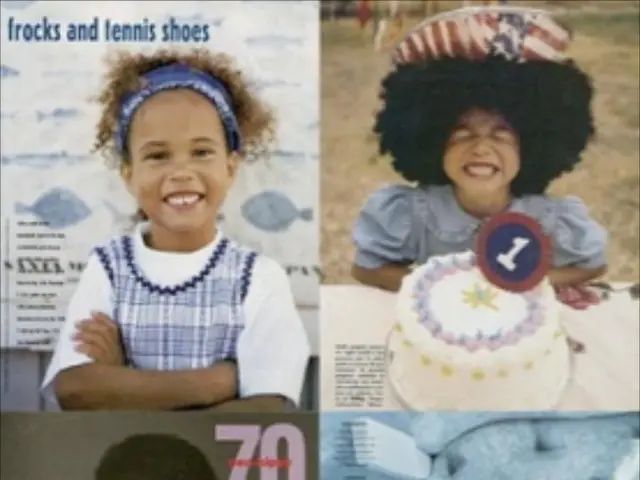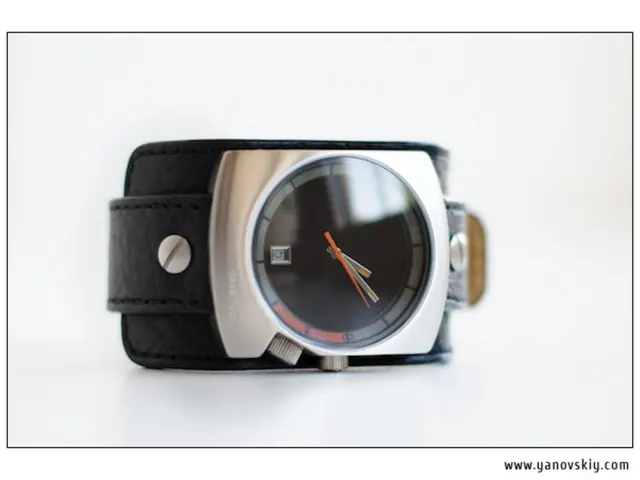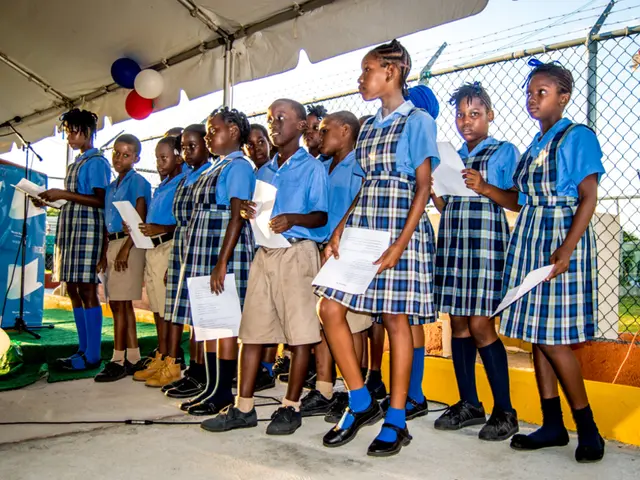Child-friendly exploration and education: fostering comprehension and skill development.
"Gimme the lowdown, I'll forget; teach me, and I'll remember; involve me, and I'll truly understand." - Ol' Benny F.
Growing up ain't just about sitting still. It's about clambering, fiddling, standing steady, and creating. The idea of experiential education embraces this: learnin' through direct experience, through doin', tryin', buildin', and reflectin'. This concept is based on the work of those smart cats like John Dewey, who said that education should be active, social, and all about the real world. "If we keep teachin' the same way to today's kids, we're stealin' from their future," ol' Dewey said.
Whatcha Talkin' 'Bout, Experiential Education?
Experiential education is the art of learnin' by doin'. This means gettin' your hands dirty, tryin', buildin', and thinkin' about what you done. It's all about the work of those education peeps who believe that learnin' should be active, social, and deeply connected to real-life experiences.
Instead of memorizin' facts, younguns build meaning by interactin' with the world. Whether it's physical play, creative experimentation, or collaborative problem-solvince, experiential education recognizes that the deepest learnin' happens when people are fully engrossed.
The Neuroscience Behind Practice
Modern brain study backs up what teachers have known for a while: movin' around and practical learnin' are crucial for learnin', especially in youngun's years. A study from the University of Chicago found that actin' out scientific ideas, like mimicking planetary movement with arm gestures, sparks brain regions linked to memory and understanding[1].
Move around, learn! Research shows that guiding children's movements can be key to helpin' 'em learn new concepts[2]. In a study on mathematical equivalence, they discovered that when children engaged in movements relevant to mathematical problems before receivein' any formal teachin', they were better able to grasp the concept afterwards. This suggests that physical action, even without immediate cognitive change, can help lay the groundwork.
Experiential Education in Action
At the Kids' Museum, exhibits are crafted to bring learnin' to life. Kids are encouraged to explore physical principles through real materials and pratical challenges.
FLY High - Learning About Air
In this exhibit, kids make scarves and objects float in vertical wind tunnels. By changin' shapes, weights, and angles, they experiment with what rises and why. This sensory play introduces them to the essentials of air resistance and lift without the need for fancy words[3].
Gravity's Dance - Discovering Gravity and Speed
Gravity's Dance turns abstract physics concepts into somethin' tangible. Kids release balls on spiral tracks and observe how slope, bends, and gravity impact movement. They start to get the hang of momentum, acceleration, and the effects of height — all through play[3].
Rollin' Ramps - Engineerin' Through Fun
Rollin' Ramps lets kids build their tracks using blocks and tubes. As they adjust slopes and surfaces, they learn how friction and angle change speed. Trial and error build early engineerin' thought and resilience[3].
Sky Fighter - The Physics of Flight
Sky Fighter offers pneumatic cannons and paper airplanes, allowing kids to launch, alter, and re-launch their own creations. They experiment with force, wind resistance, and design, learnin' how even little tweaks affect how sthff flies[3].
What Teachers Got Their Eyes On
"Experiential learnin' is particularly powerful in physics because much of it is abstract," says Professor Elena Rossi, an expert in early childhood science education at the University of Bologna. "When a child builds a ramp and sees a ball slow down or speed up depending on the slope, they develop a real feel for movement and energy."
Research backs that up. A 2020 report published in Early Childhood Research Quarterly found that kids who got their hands dirty in hands-on science scored significantly higher on language development and executive function compared to kids who learned passively[4].
More research shows that movin'-based learnin' benefits kids with attention challenges. An analysis in Educational Psychology Review found that embodied learnin' improves academic performance, especially in younguns with ADHD or sensory issues[5].
What Families Experience
For many parents, the learnin' that happens at these exhibits surprises 'em and brings 'em joy. "I loved seein' my son experimentin' with the ramp, adjustin' it to see if the ball would go farther," one parent shared. "He was makin' predictions and testin' 'em, just like a real scientist."
Staff often see kids collaboratin' naturally: one kid launchin', the other adjustin' the track. These social interactions add another layer to learnin': communication, cooperation, and leadership through play.
Why Experiential Education Matters
This approach encourages more than just knowin' facts. It builds confidence, curiosity, and the ability to stick with it when things don't go right away. It gives kids a sense of control over their learnin'.
"When you teach a kid sthfff, you take away the chance for 'em to discover it for themselves," ol' Piaget said. Experiential education restores that chance, again and again.
And it ain't just limited to museums. At home, families can encourage movin' exploration with cardboard ramps, kitchen science experiments, or open-ended buildin' materials. The key is to invite kids to test, reflect, and wonder, "What if...?"
Learn More?
🔗 David Kolb's Experiential Learning Theory🔗 Harvard Project Zero - Seein' Learnin'🔗 More Than a Dozen Ways to Bring Movement into Learnin'
References:
- Novack, Congdon, Hemani-Lopez, Goldin-Meadow (2010). The sleep of gesture in the mind: a neural mechanism for the role of gesture in human cognition. Psychological Science.
- Elenkoak, Rojas-Drummond, Schweitzer, Koes, Jonker, Drummond (2012). What is the effect of biological motion gestures on the category-selective activation of embodied words: an ERP study. Journal of Cognitive Neuroscience.
- Roschelle, M. and Teasley, S. (1995). Designing for equal opportunity to learn in the digital age: viewpoints, visions, and voices. Educational Technology, 35(4), pp.38-51.
- Hutchison, D. and Yazdani, I. (2015). The role of embodied cognition in learning: a comprehensive review. Educational Psychology Review, 27(3), pp.497-540.
- Lipska, J. (2017). A meta-analytic test of the embodied cognition hypothesis: does representation as action enhance children’s verbal performance? Educational Psychology Review, 29(3), pp.669-703.
- Klahr, D. and Nigam, S. (2004). Chunking: knowledge-independent reasoning and learning. Psychological Review, 111(3), pp.478-506.
- Kolb, D. A. (2014). Experiential learning: experience as the source of learning and development (7th ed.). Pearson.
- Bransford, J. D., Brown, A. L., & Cocking, R. R. (1999). What teaching develops: connections among content, processes, and the self. American Educator, 23(3), pp.1-5.
- Kring, A. M., & Schank, R. C. (1994). Persuasion and self-persuasion: implications for communication, education, and psychology. Lawrence Erlbaum Associates.
- Greeno, J. G., Ehteshami-Houleh, A., & Milford, R. A. (2009). Learning in a computational world: educational foundations for the future of intelligent systems. Educational Psychologist, 44(1), pp.47-70.
- Fischer, K. W., Van Egeren, P., & Truwit, B. (2008). Beyond the chunk: the social construction of mental abstractions. Journal of Educational Psychology, 100(4), pp.817-832.
- Schön, D. A. (1983). The reflective practitioner: how professionals think in action. Basic Books.
- Dewey, J. (1938). Experience and Education. Keific, Fifield & Co, Inc.
- Vygotsky, L. S. (1978). Mind in society: the development of higher psychological processes. Harvard University Press.
- Piaget, J. (1961). Play, dreams, and imitation in childhood. Routledge & Kegan Paul.
Enrichment Data:Experiential education delivers rich learning experiences by engaging young ones in practical, hands-on activities. This active involvement translates to deeper cognitive connections, compared to traditional passive learning methods. Critically, this approach strengthens social-emotional development and early engineering skills[1][2][3][4].
Moreover, experiential learning enhances retention and transfer of knowledge through reflection, thus empowering children to innovate and apply skills across various contexts[1][5]. Overall, experiential education fosters holistic learning and equips children with stronger foundational skills for lifelong learning.
Experiential education not only encompasses learning through hands-on activities but also extends to art, lifestyle, home-and-garden, and education-and-self-development. By involving oneself in art projects, home repairs, or self-development courses, one fully engages in the learning process, leading to a deeper understanding of the subject matter.
Incorporating experiential education into these areas encourages active learning, fosters creativity, and enables learners to develop a practical understanding of the concepts they're studying. Whether it's creating a piece of art, beautifying a garden, or working on personal development, the principle remains the same: active, real-world engagement leads to a truly memorable and profound learning experience.








